Edward Tufte’s Hogpen Hill Farms
Edward Tufte is best known for his course and books on information design (or analytical design, as he prefers to call it): The Visual Display of Quantitative Information, Envisioning Information, Visual Explanations, Beautiful Evidence, and the most recent Seeing with Fresh Eyes. His abstract sculpture work is less known, perhaps because it was almost impossible to see. In the 2000s and 2010s, he exhibited in New York and Los Angeles art museums, and in 2004 bought a 234-acre tree farm in Woodbury, CT, to fill with his outdoor sculptures. Hogpen Hill Farms opened to the public for just one day per year, so chances to visit it were slim.
In 2020, Edward Tufte tweeted that his farm will be open for multiple days in October. Sadly, I saw this tweet only in November. Even while it was too late, I emailed asking him to add me to an email list for future openings. Almost a year later, at the end of May 2021, I’ve got an email that Hogpen Hill Farms will be open for a few days nearly every week of the summer. I immediately bought a ticket for Friday, June 25th.
The art farm in Woodbury, CT is about 200 miles away from my home in Ardmore, PA. My wife’s plans later changed, so I went on this trip with my 11-year-old daughter. We’ve never been to New Haven before and decided to go there on Thursday, explore the city, and then go to ET’s farm the next morning before driving back home.
As soon as we entered the farm, it was clear that this is Tufte’s place — all information signs are set in his on-brand red Gill Sans:
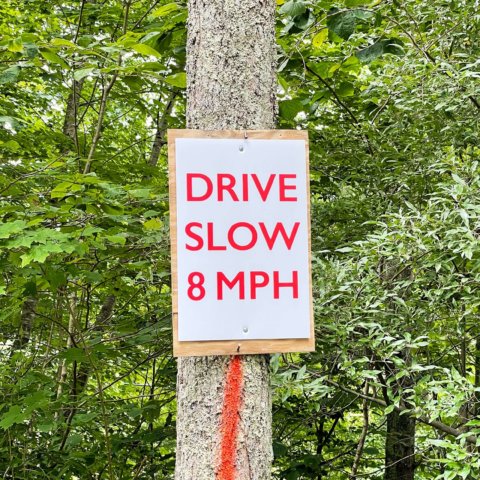

Warning signs are special as well:
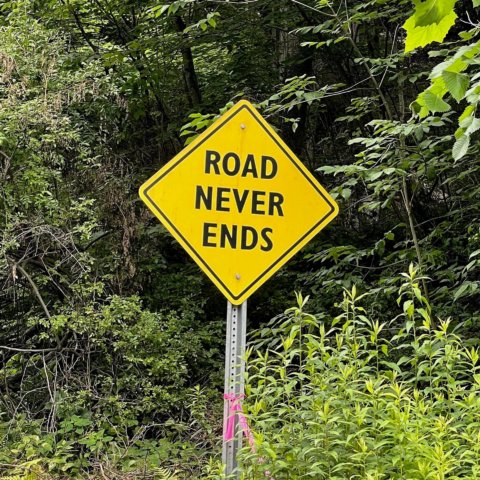
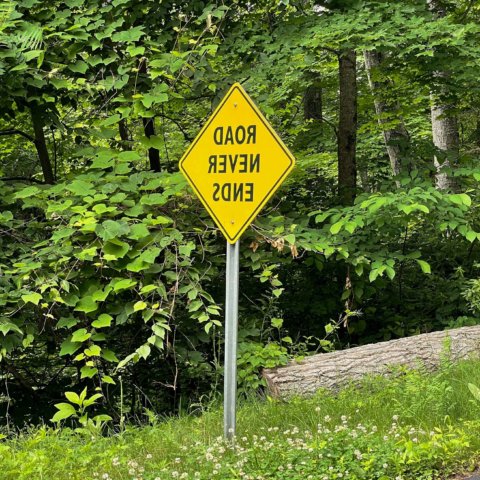
(No, the second photo wasn’t taken in a mirror.)
Before getting to the parking lot, we’ve been given a large handout with a visual north-to-south map of art objects and some information about the place on the back. (Notice the way toilets are shown on this map.) This reminded me of attending Tufte’s one-day course in 2013, where he started the day with assigned reading from the handouts.
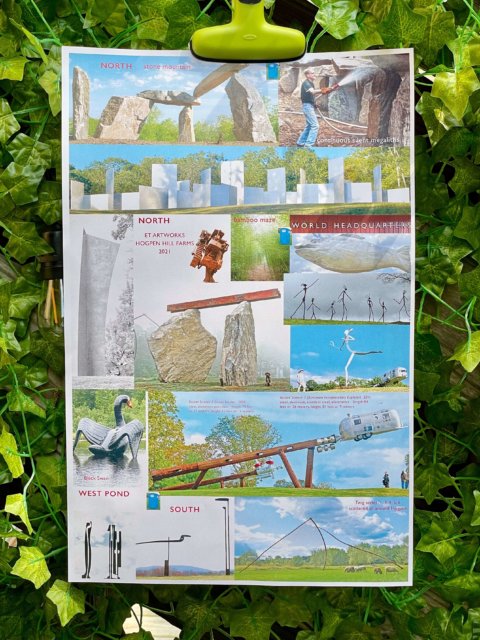
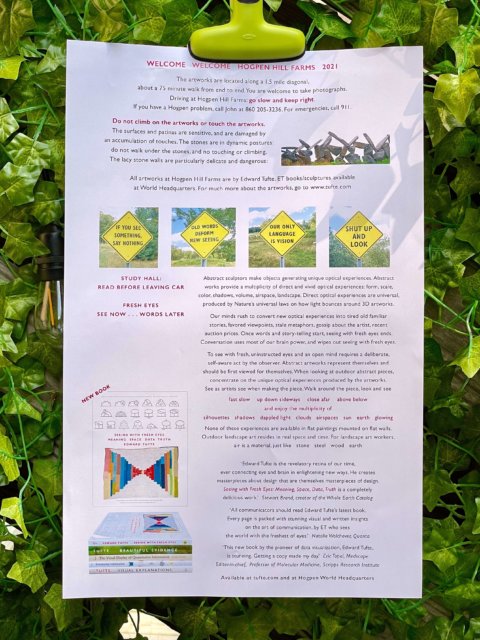
Seeing large-scale sculptures and installations placed in nature instead of being trapped inside a sterile art museum was a refreshing experience. As ET writes in his essay Seeing Around, Seen real by viewers walking around outdoors, abstract works provide a multiplicity of direct and vivid optical experiences: form, scale, color, shadows, volume, airspace, landscape.
This makes photographing his art tricky. In hindsight, I wish I had taken video time-lapses to show moving shadows and changes in color reflections from clouds and the environment.
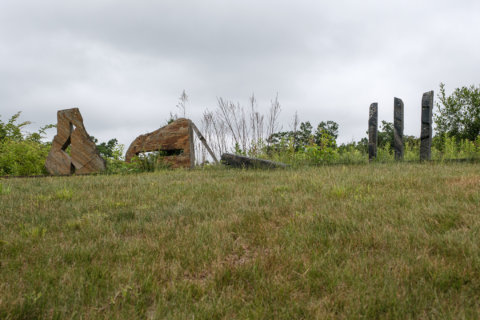
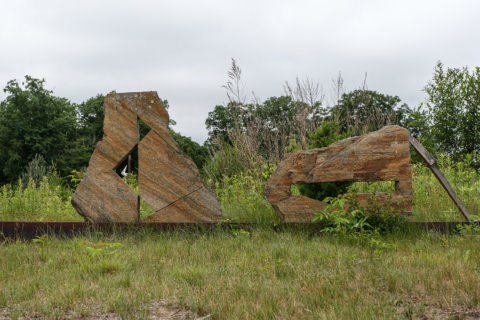

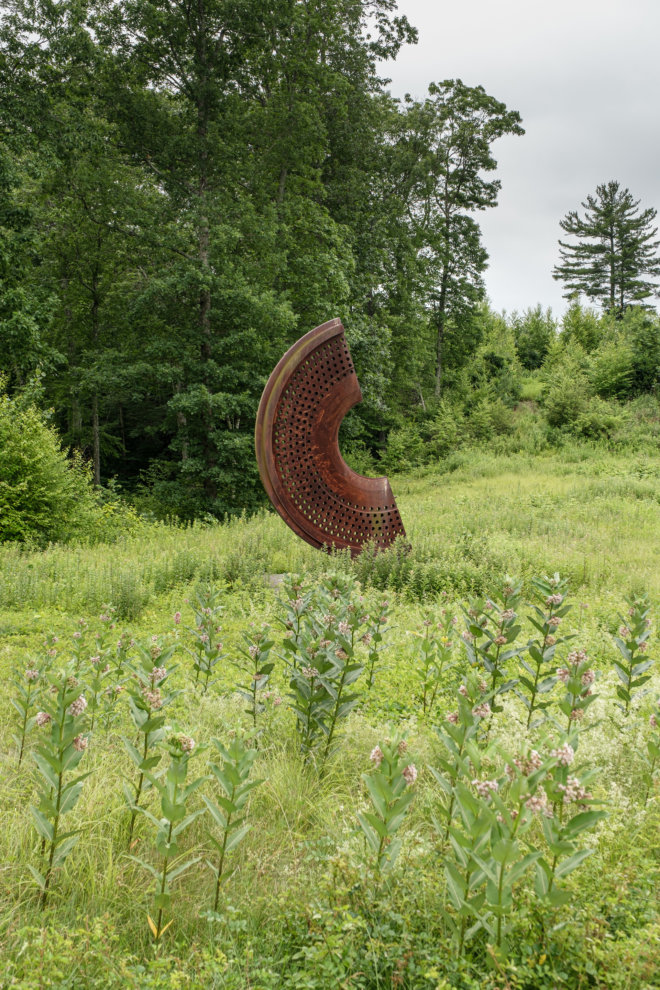
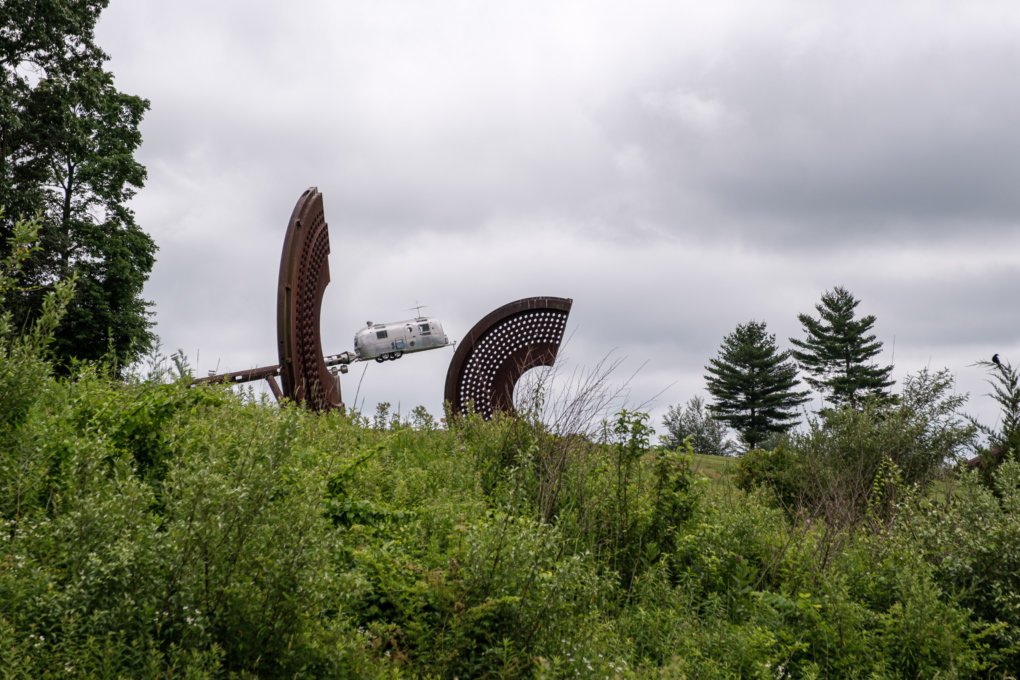
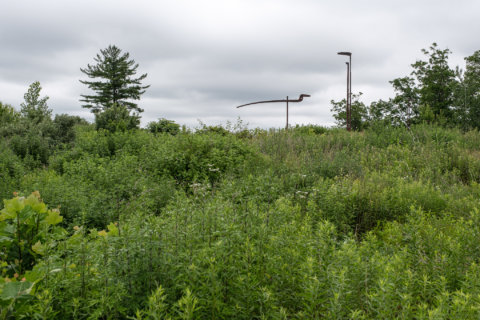
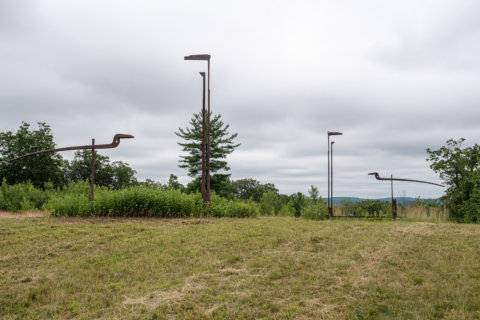
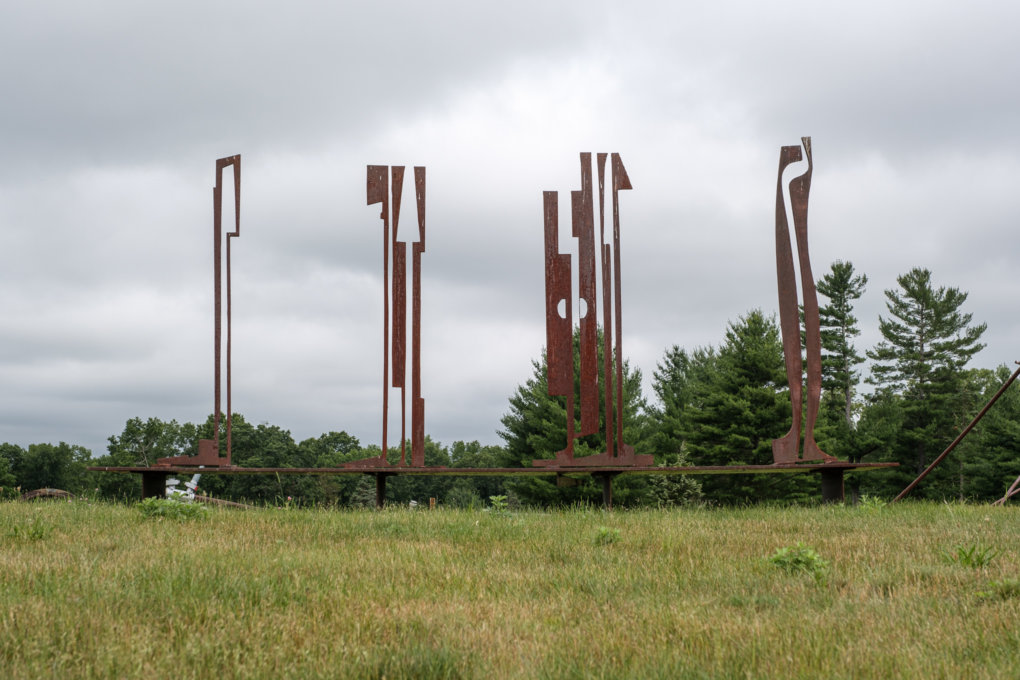
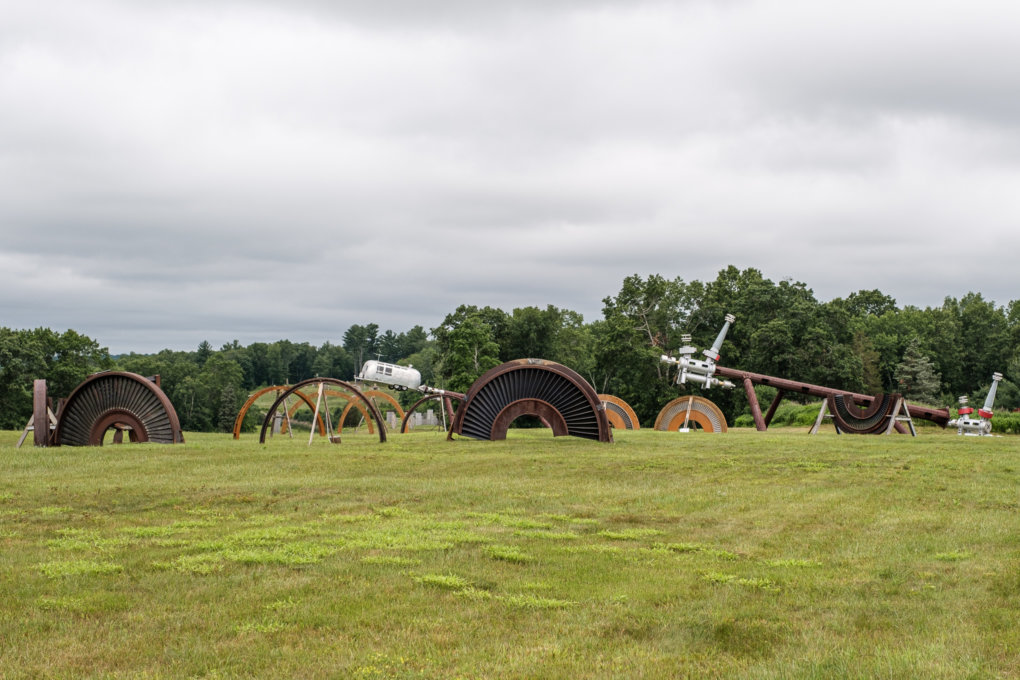
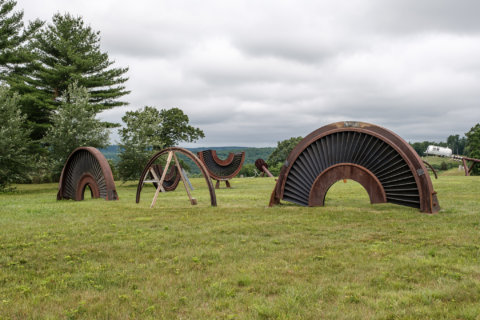

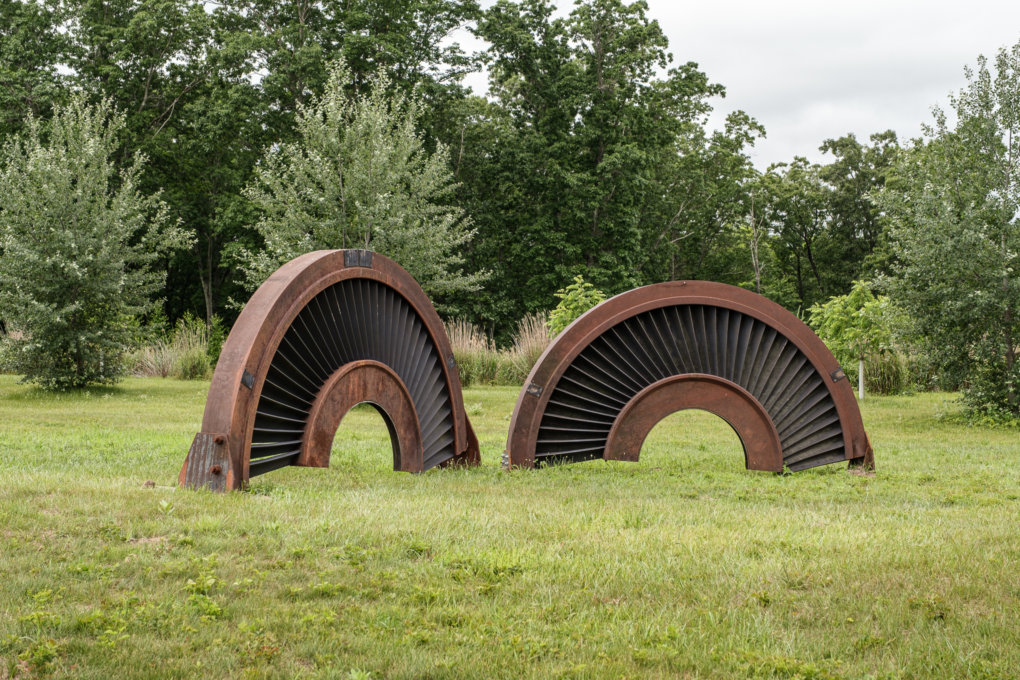

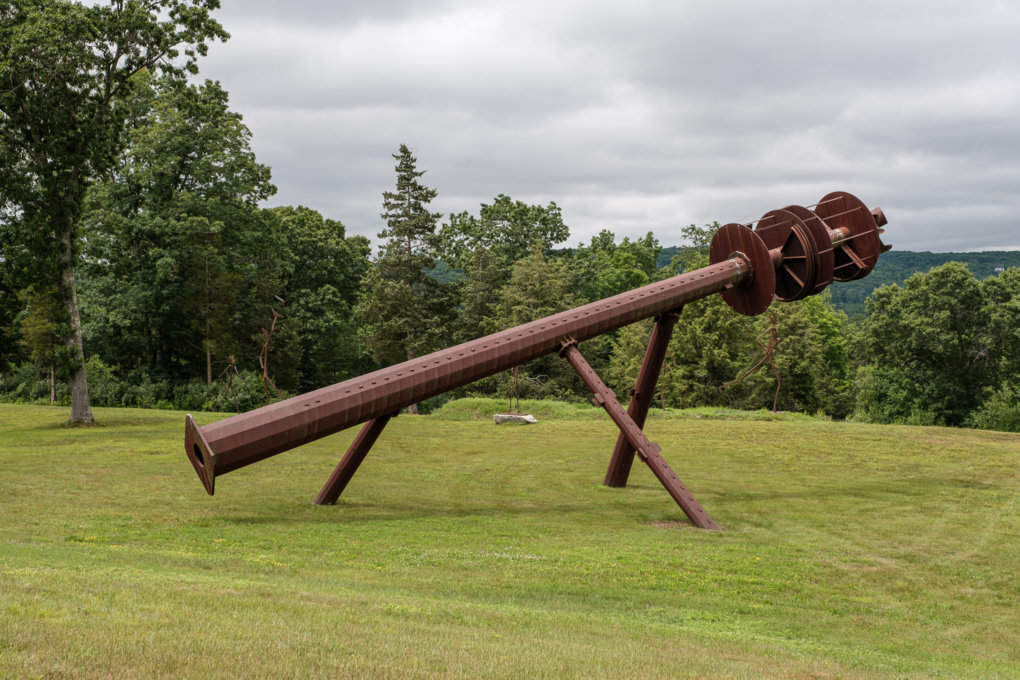
On form and scale:
“Rocket Science, physically large, appears immense and disorienting to nearly observers on the land, delightful to children, and not all that big a presence compared to nearby land, trees, horizon hills.”
How it was designed and built at a concrete plant with scrap metal from a nuclear powerplant:
“Rocket Science was designed at full scale. Big cranes temporarily held together rough drafts of the artwork. A small cardboard model later helped engineer the legs and locate the piece. Photographs and videos were shot at several scales. Full-size mock-ups, small models, computer animations, sketches, confections, photographs, videos: whatever it takes to see, understand, and construct artwork.”
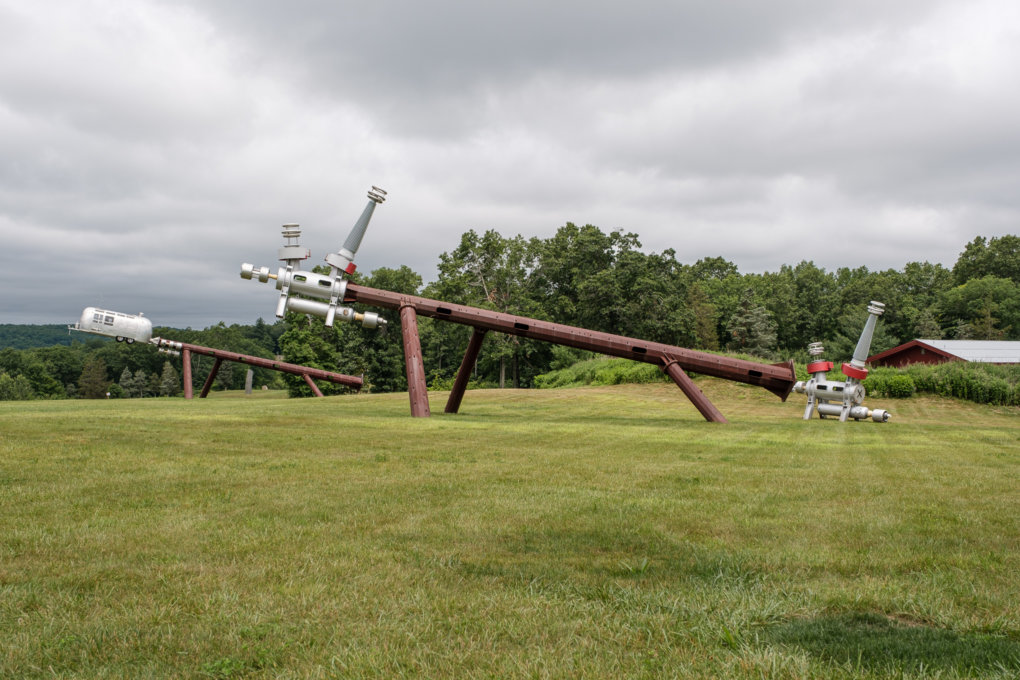
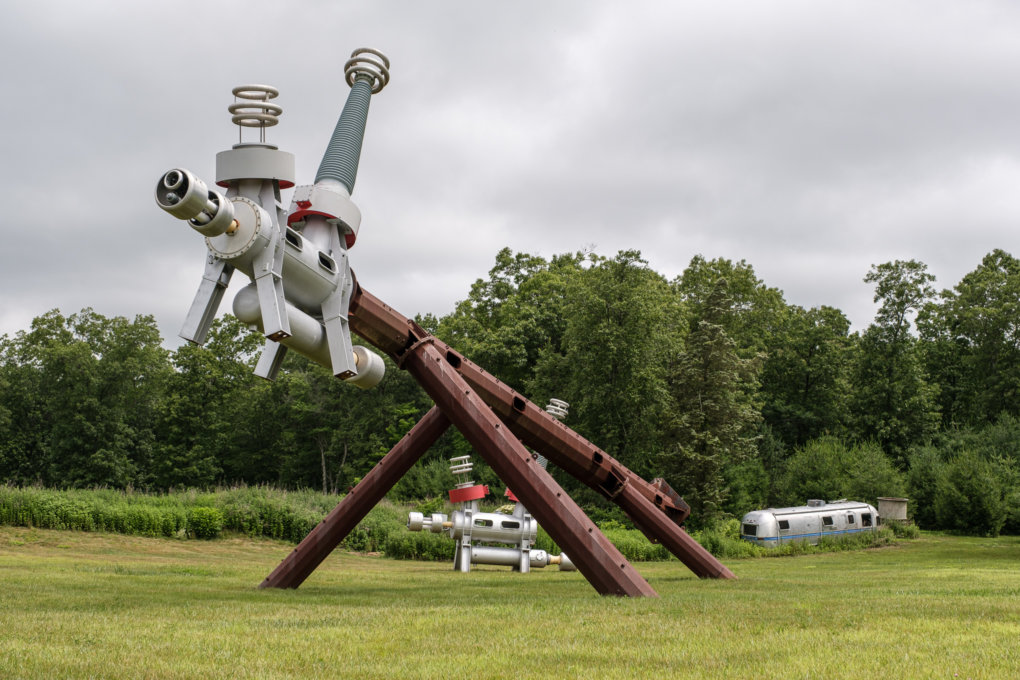
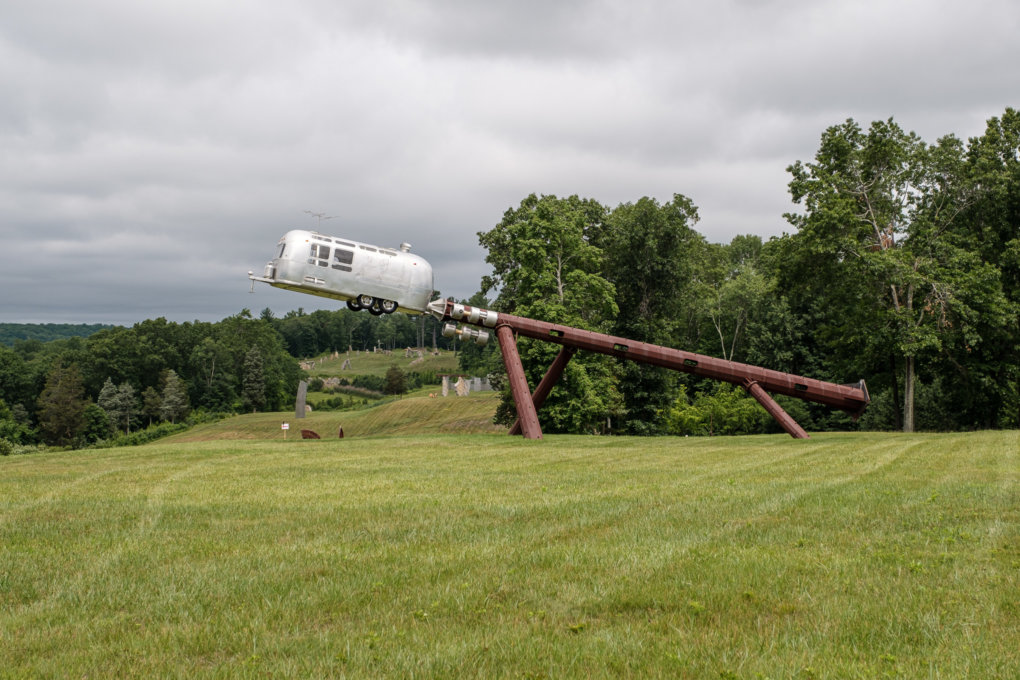
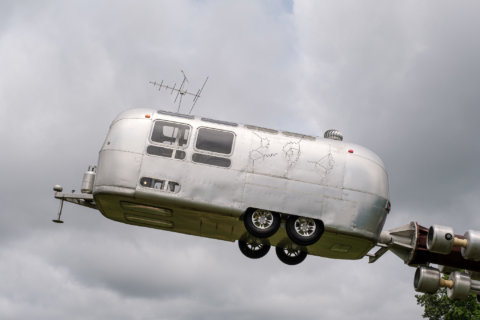
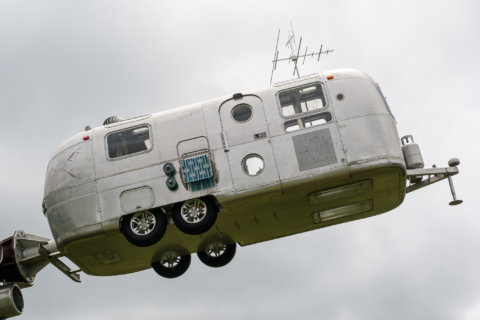
“Since Feynman diagrams describe the universal operations of Nature’s laws, they can communicate throughout the universe. Both sides of the Airstream Interplanetary Explorer show Feynman diagrams that might communicate with intelligent life anywhere. Better the cosmopolitan verbs of Nature’s laws on spacecraft than the local proper nouns of national flags, earthly Gods and Goddesses, government agency logos. For interplanetary exploration, better to send smart machines and their emblematic Feynman diagrams than human beings and their lawn chairs, toilets, teddie bears.”
Notice how extra webbing rolls are stored right next to a lawn chair, just in case a repair is needed.

ET created a “cosmic prank”, based on the Pioneer space plaque:
“Since the principles of physics hold everywhere in the entire universe, magic is conceivably a cosmological entertainment, with the wonder induced by theatrical illusions available to and appreciated by all, regardless of planetary system. Accordingly the original plaque placed aboard the Pioneer spacecraft for extraterrestrial scrutiny billions of years from now might have escaped from its conspicuously anthropocentric gestures by showing instead the universally familiar Amazing Levitation Trick.”
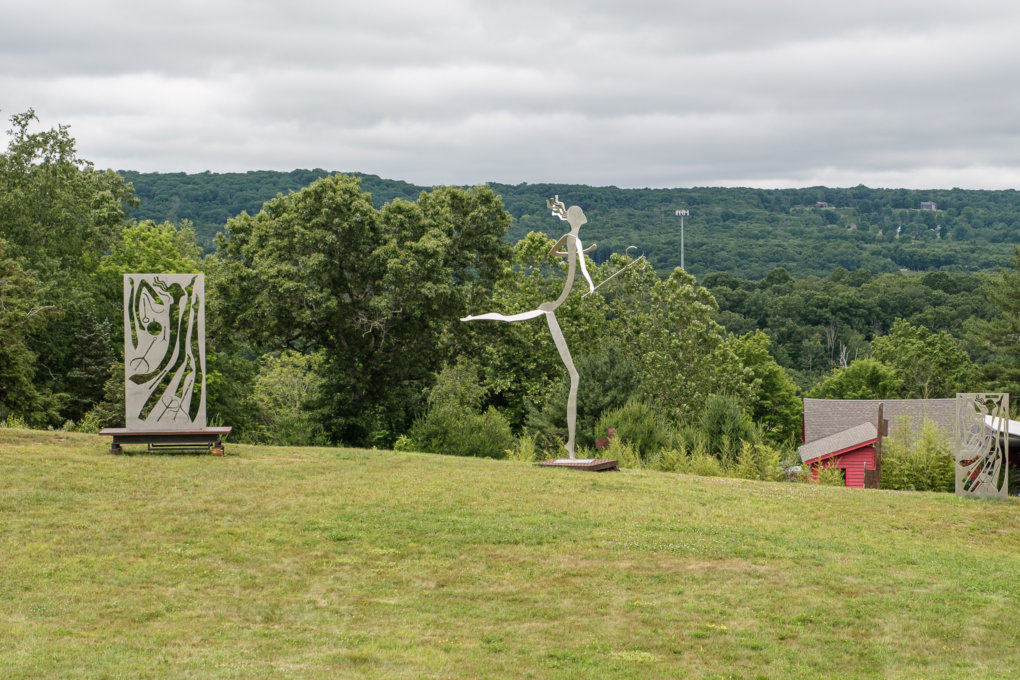
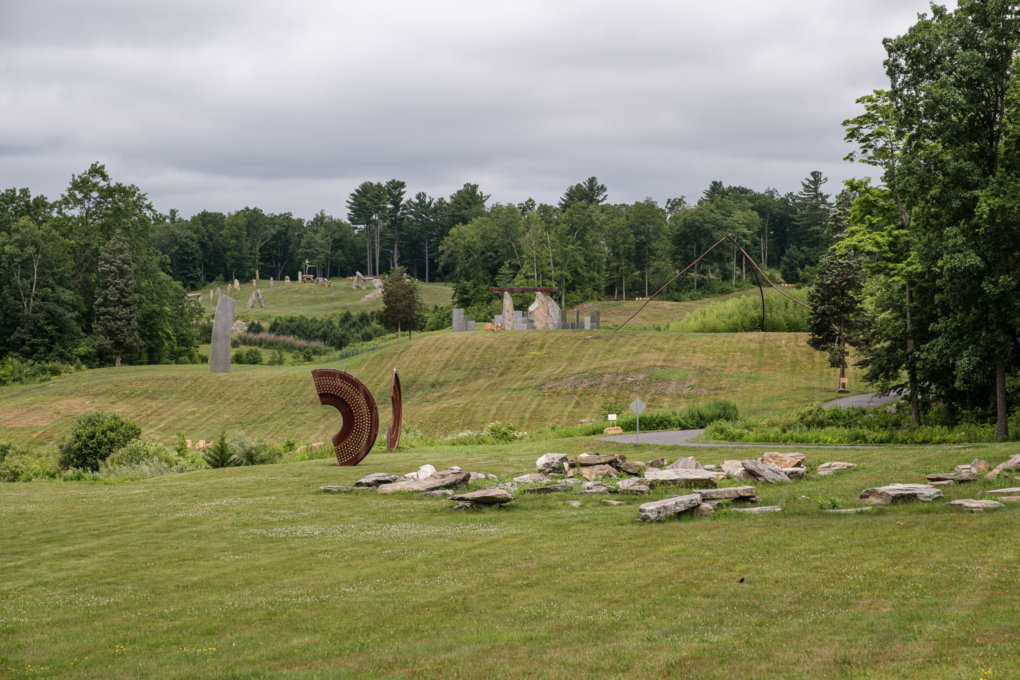
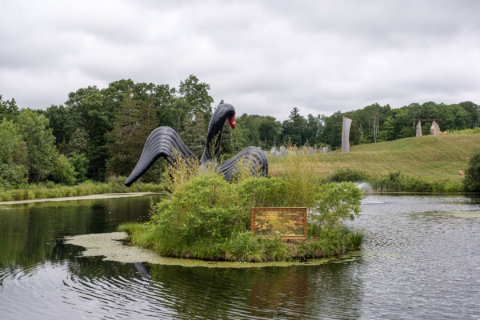
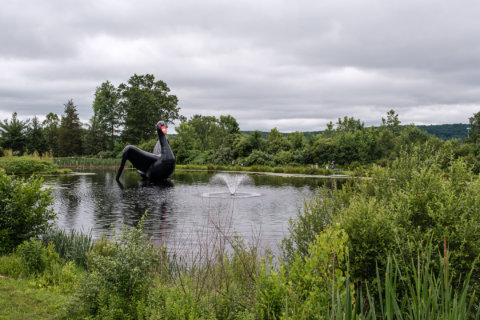


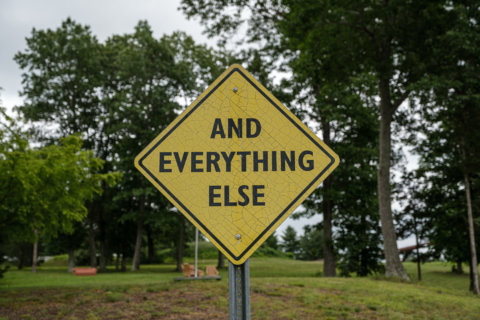

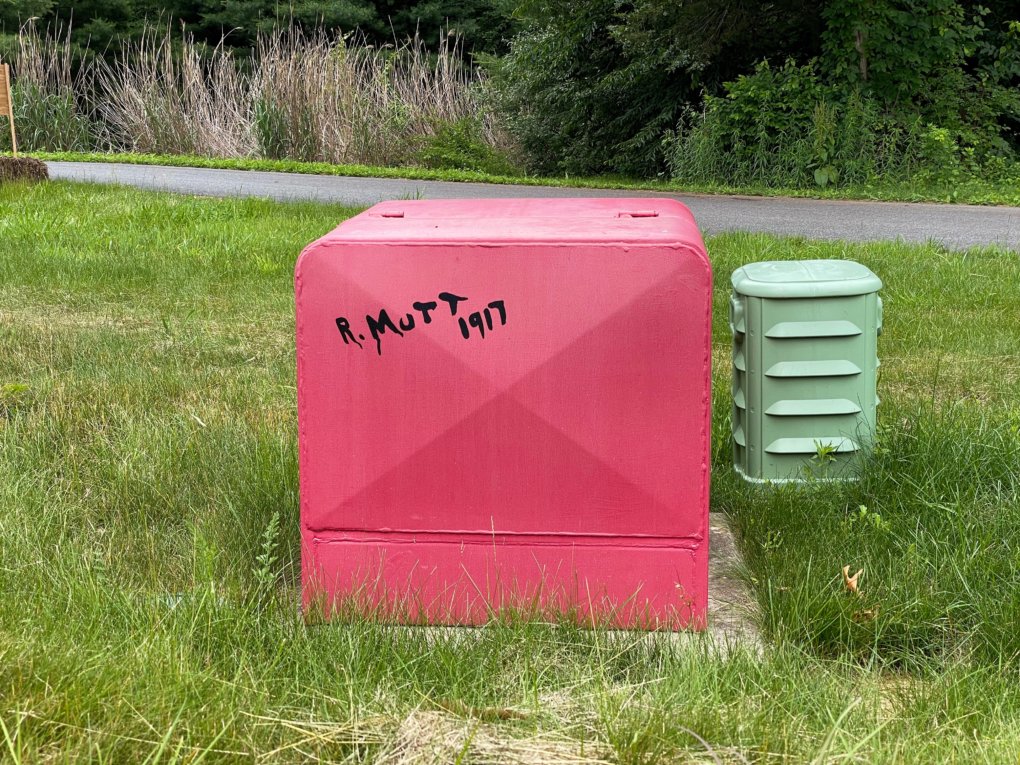
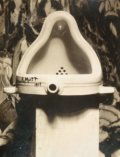
In 1917, Marcel Duchamp submitted an ordinary porcelain urinal signed “R. Mutt” for an exhibition of the Society of Independent Artists in New York. Duchamp described his intent with the piece was to shift the focus of art from physical craft to intellectual interpretation. Philosopher Stephen Hicks wrote in 2004: “In selecting the urinal, his message was clear: Art is something you piss on.” Well, I don’t think pissing on the electrical box near the World Headquarters would be a good idea.

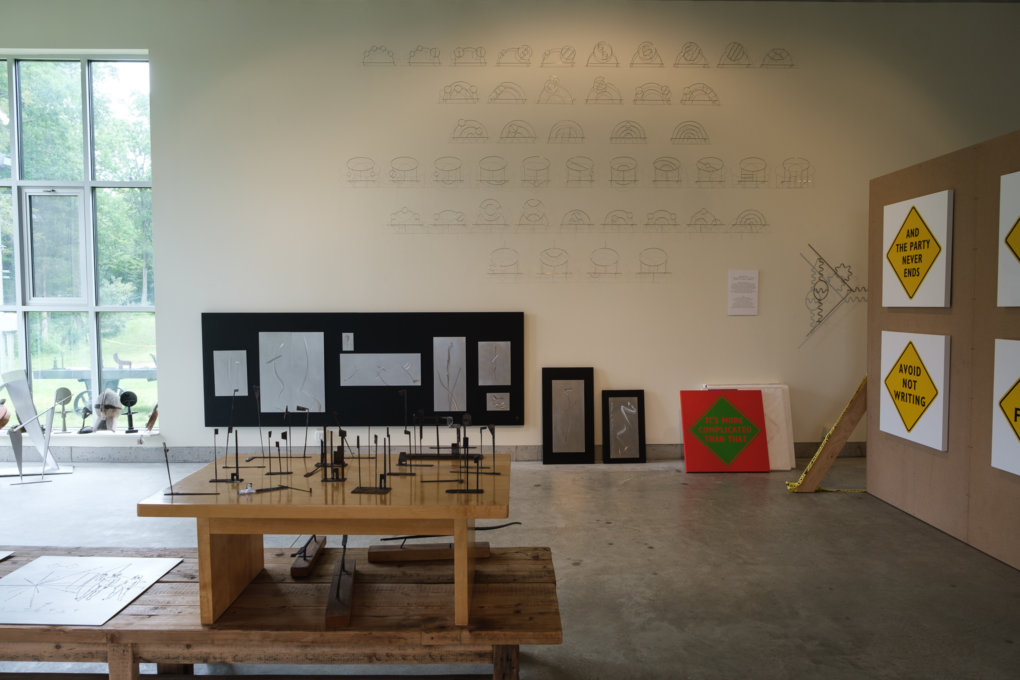
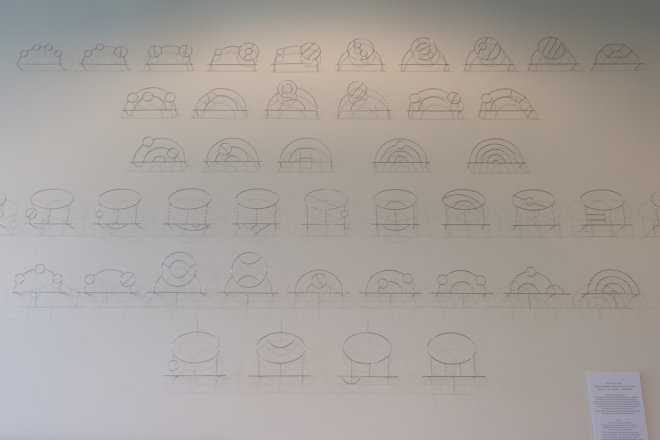
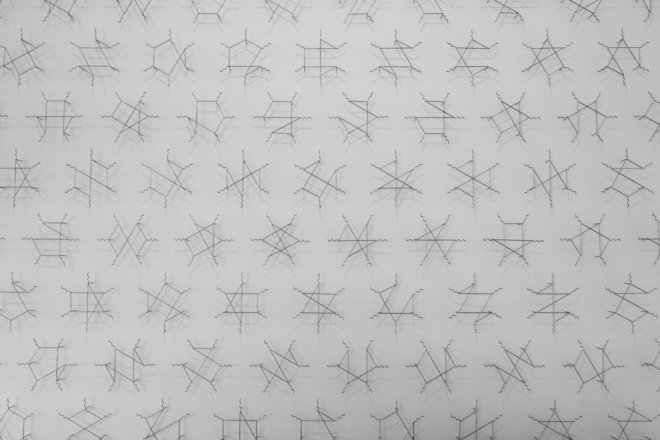
ET in his essay The Cognitive Art of Feynman Diagrams:
“Made from stainless steel and air, the artworks grow out of Richard Feynman’s famous diagrams describing Nature’s subatomic behavior. Feynman diagrams depict the space-time patterns of particles and waves of quantum electrodynamics. These mathematically derived and empirically verified visualizations represent the space-time paths taken by all subatomic particles in the universe. The resulting conceptual and cognitive art is both beautiful and true. Along with their art, the stainless steel elements of All Possible Photons actually represent something: the precise activities of Nature at her highest resolution. Gathered together, as in the 120 diagrams showing all possible space-time paths of 6-photon scattering, the stainless steel lines (and their variable shadow, airspace, light, color, form) reveal the endless complexities that result from multiplying and varying fundamental elements.”
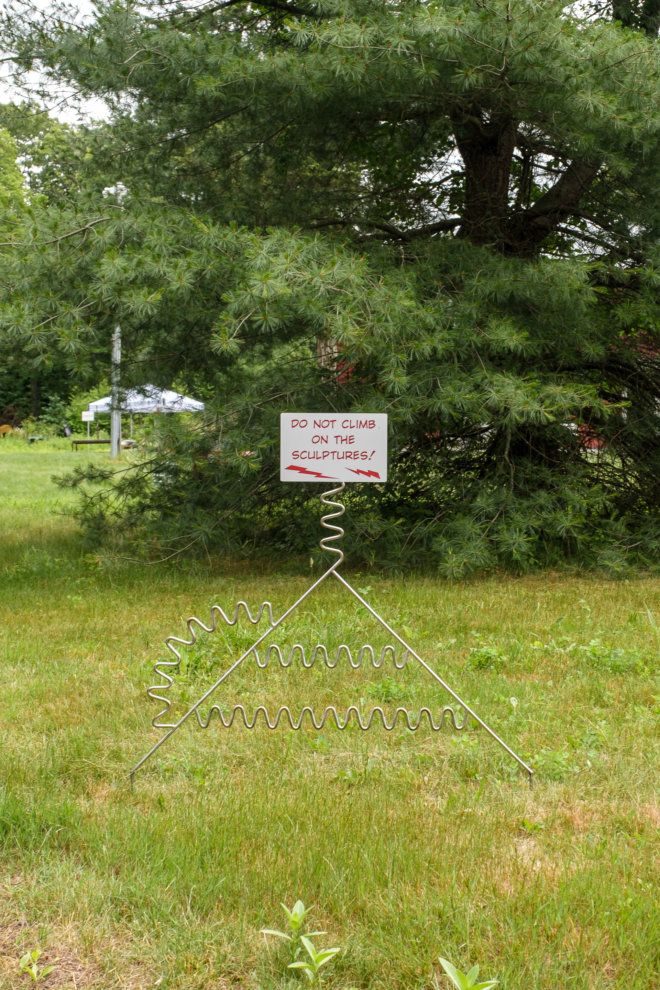
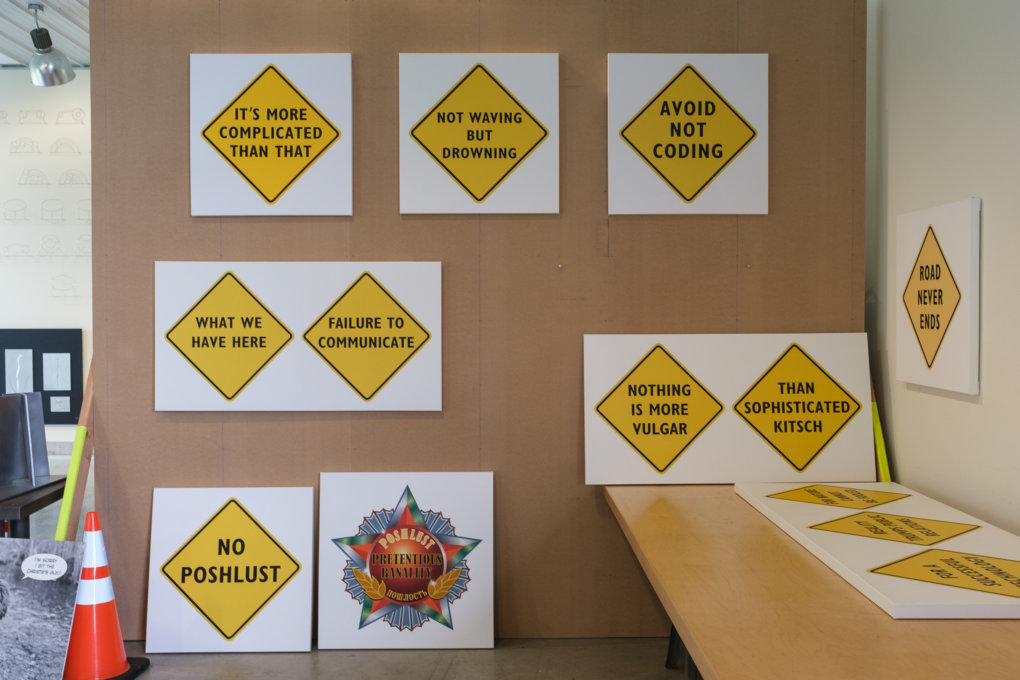
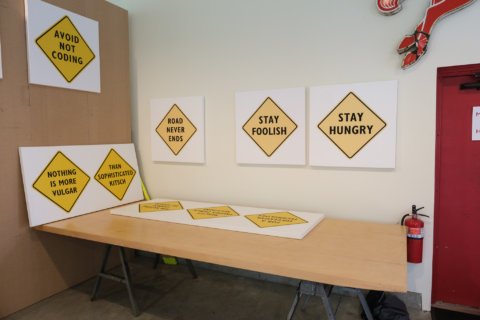
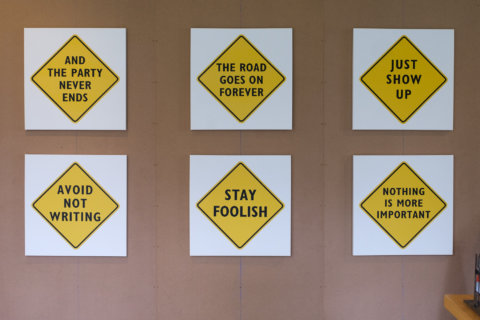
World Headquarters is used as a gallery and office. Some of the miniature sculptures and books were for sale outside. I’ve got a couple of printed essays on sculpture and installations, used as a reference for this post.
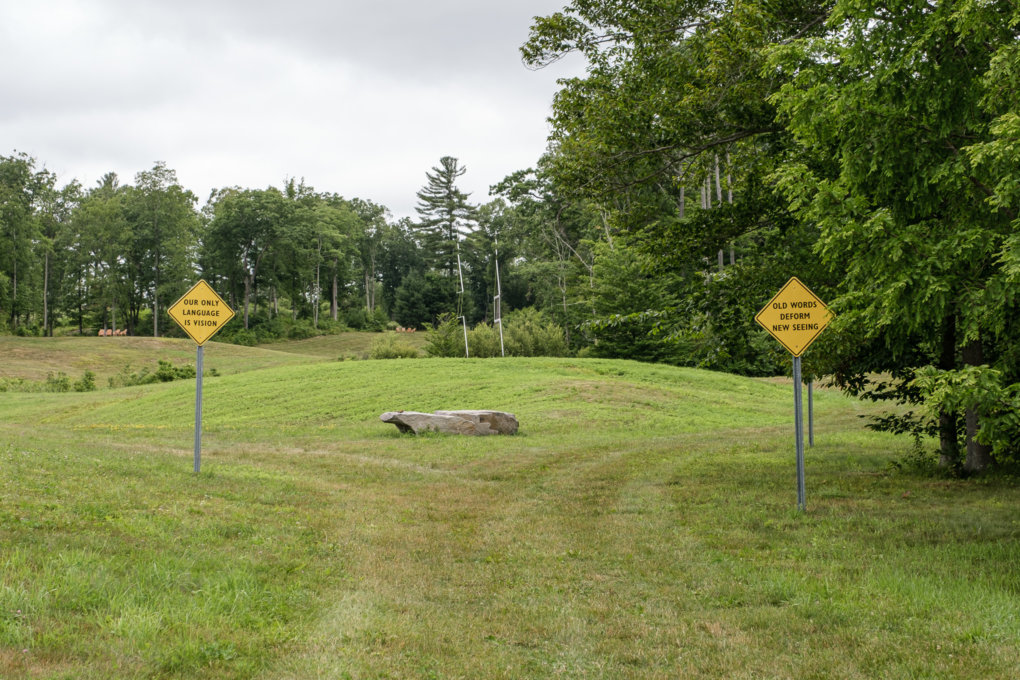
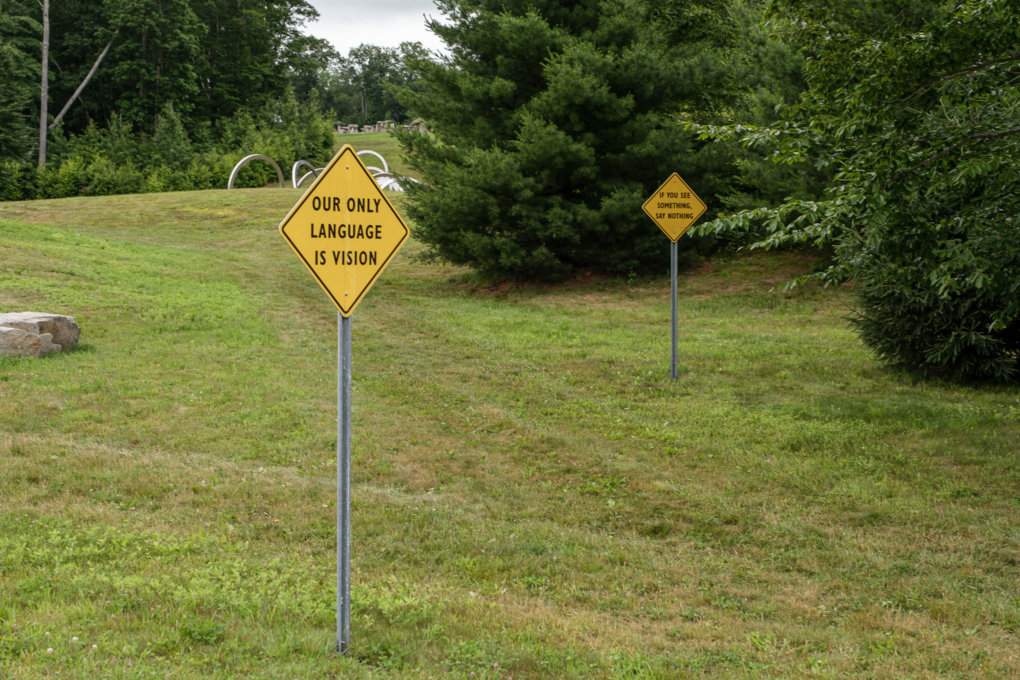
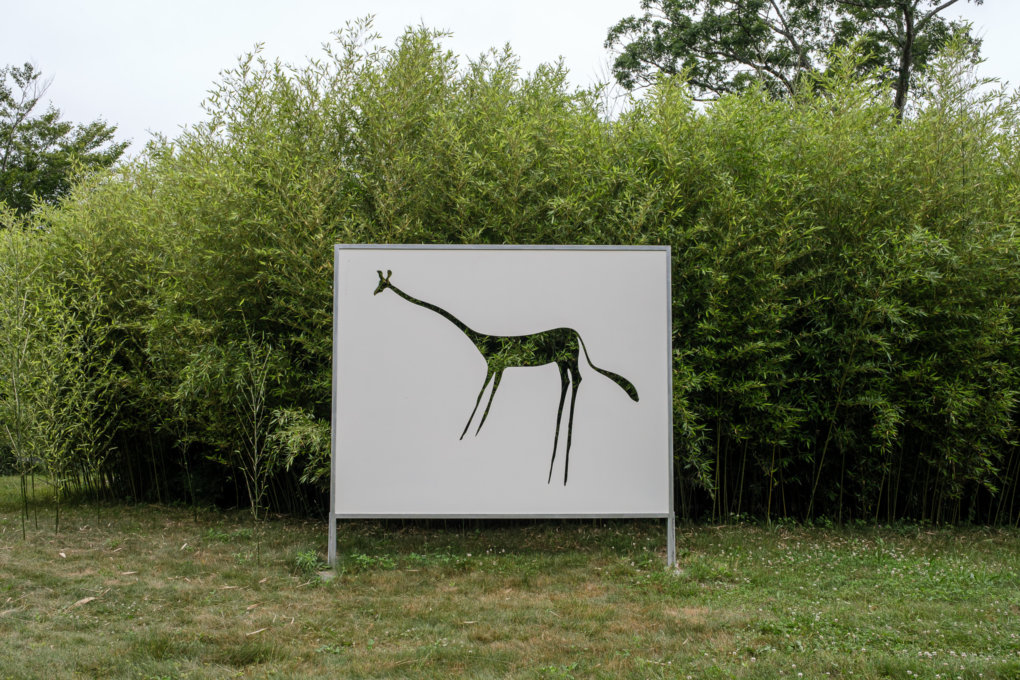
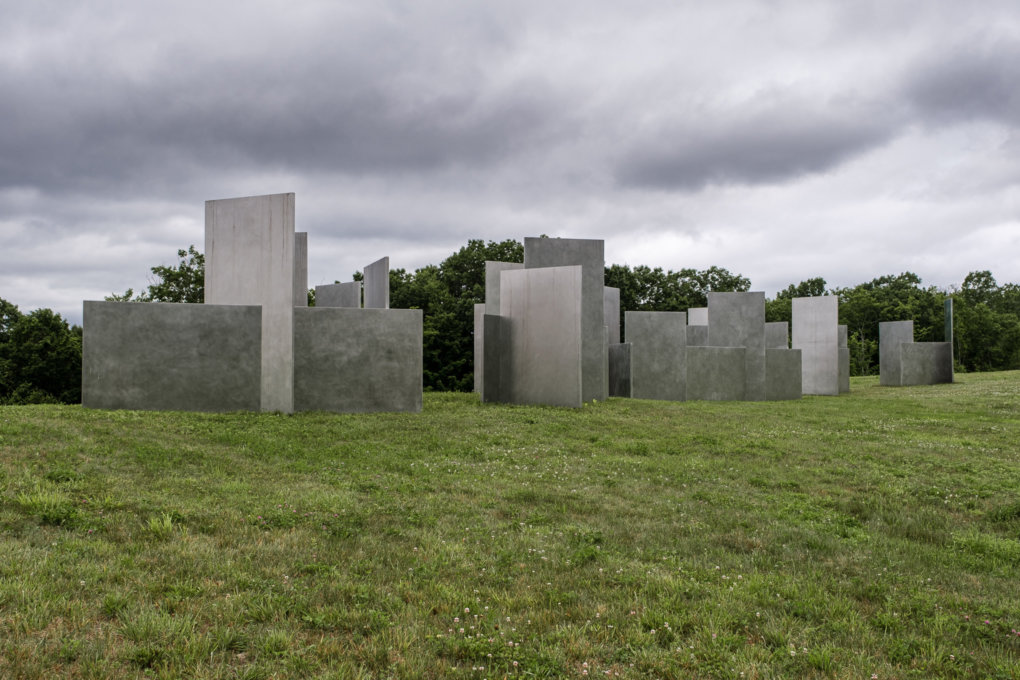
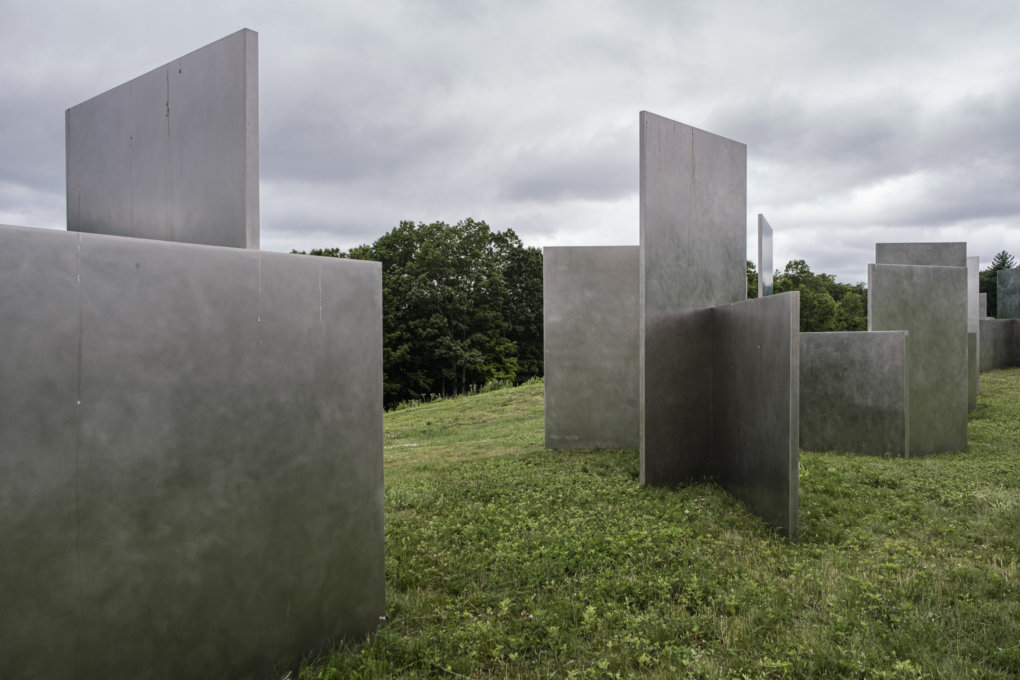
Escaping Flatland was one of my favorites. I think the overcast weather during our visit was perfect for seeing it. Polished stainless steel reflects green grass and grayish clouds, creating rich and deep colors without specks of light.
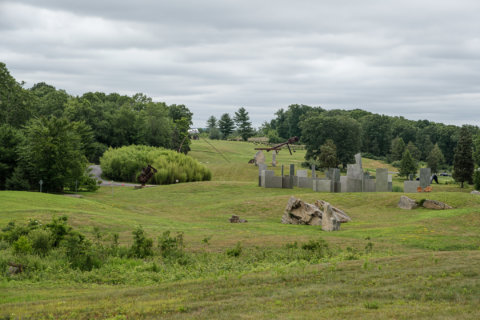
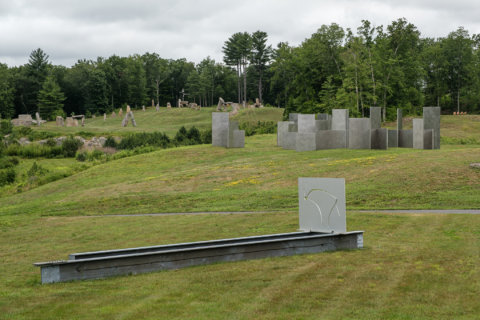
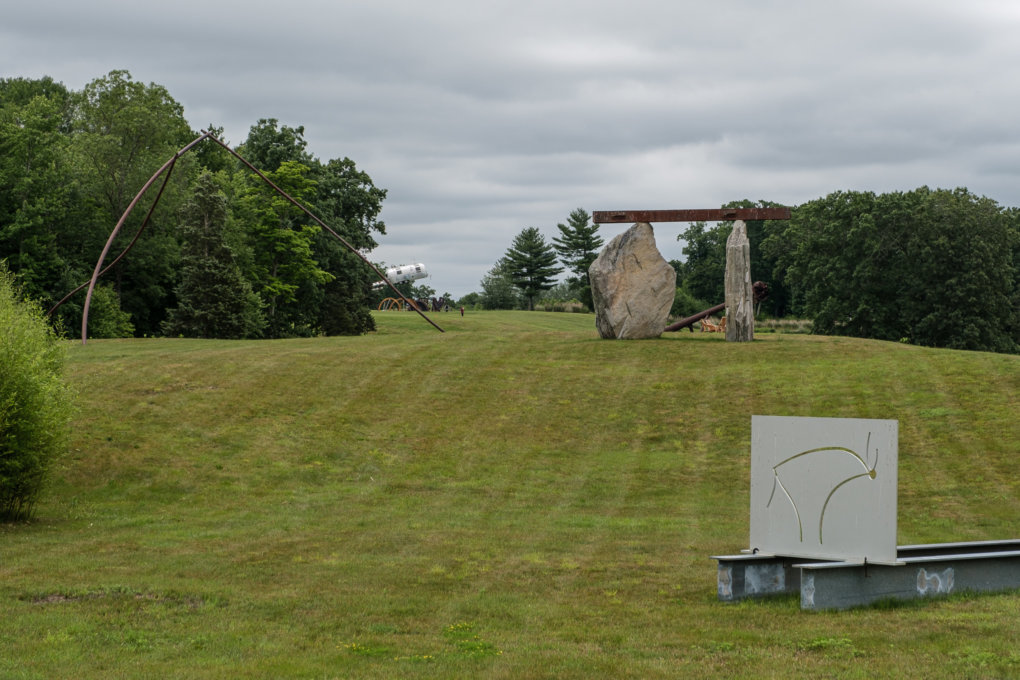
Pablo Picasso’s The Bull is a series of eleven lithographs created in 1945. It depicts the bull at various stages of abstraction, starting with a fairly realistic depiction and ending with nothing but a few lines. Tufte’s bull is even simpler but lost his balls in the process.

(See also Twitter thread by Trung Phan on how Apple has used Pablo Picasso’s Bull to explain innovation as “saying no to 1000 things” before you say yes. It even appeared in their famous “Think Different” ad.)



“Magritte’s smile, the sculpture, makes an overt reference to another painting of Magritte. Also the smile has the ambiguous status, perhaps, of a good many of Magritte’s images, their conjunction of presence and denial of presence. Magritte’s Smile, since it at least resides in three dimensions, is closer to a real fish and a real smile than flatland representations of the same.”
Took me some time to find the painting he refers to — “The connivance”, made in 1965:
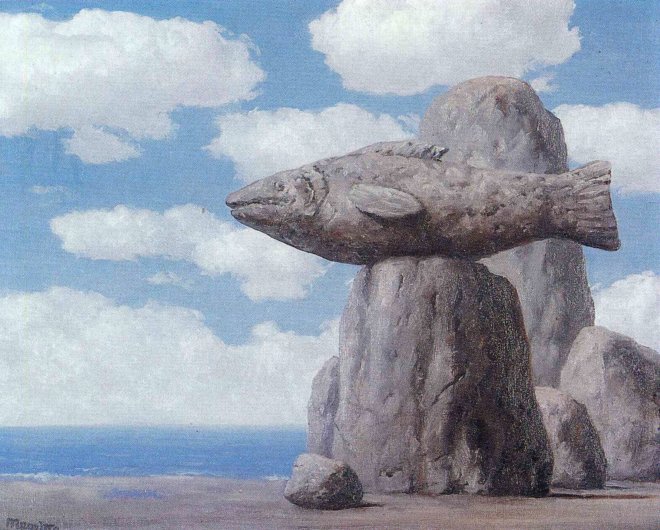
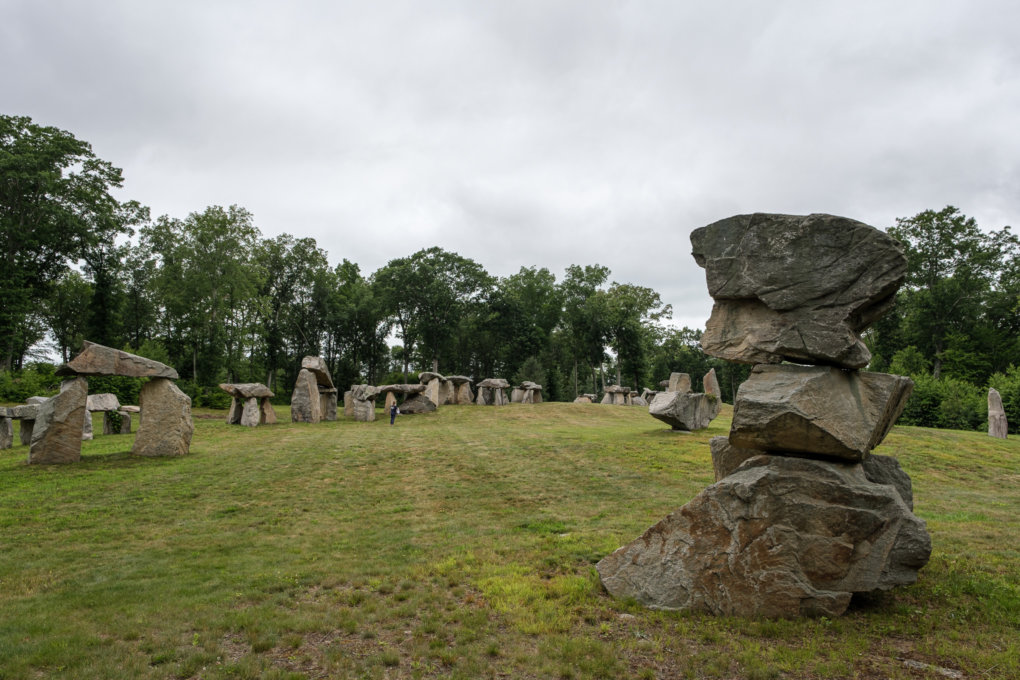
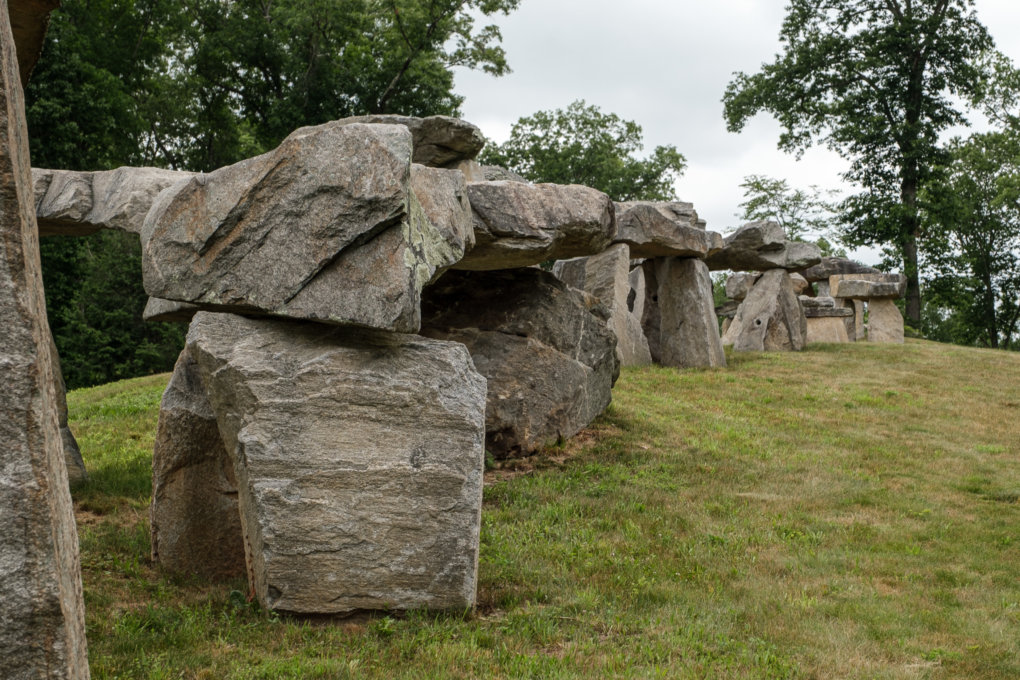
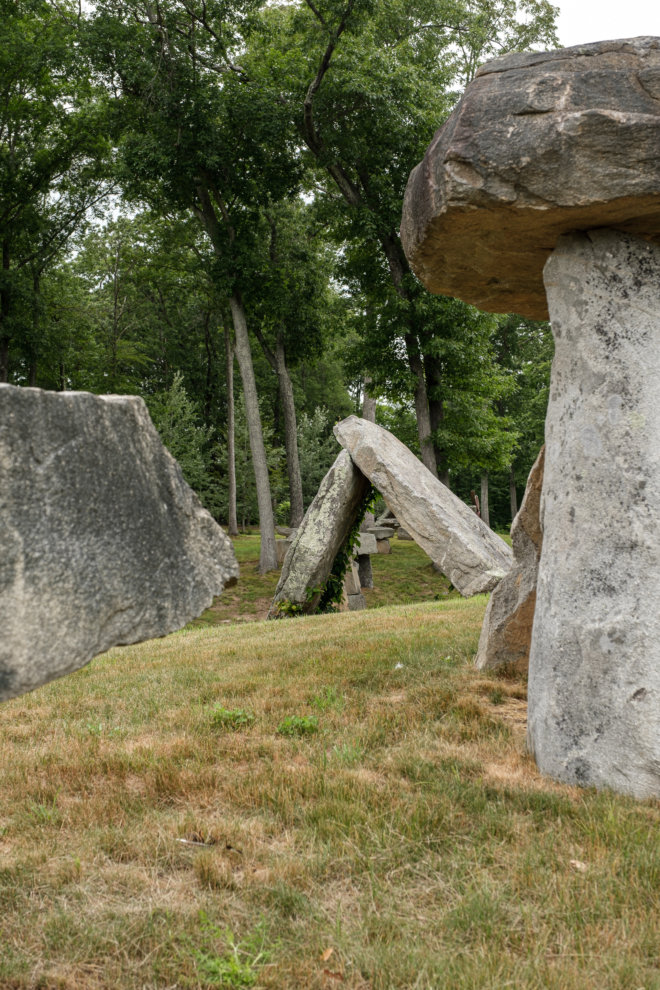
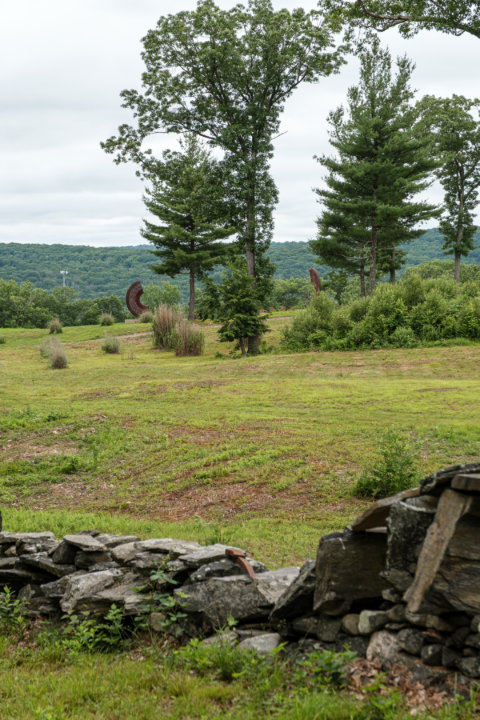
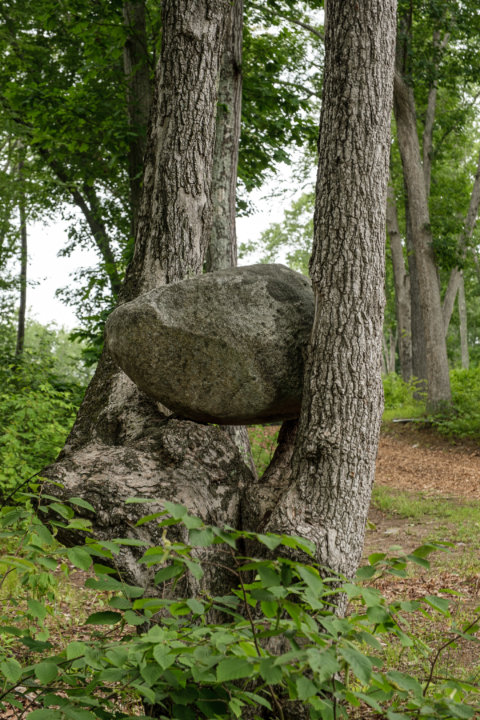
This rock was the most puzzling piece of art on the farm. Or was it just a rock?
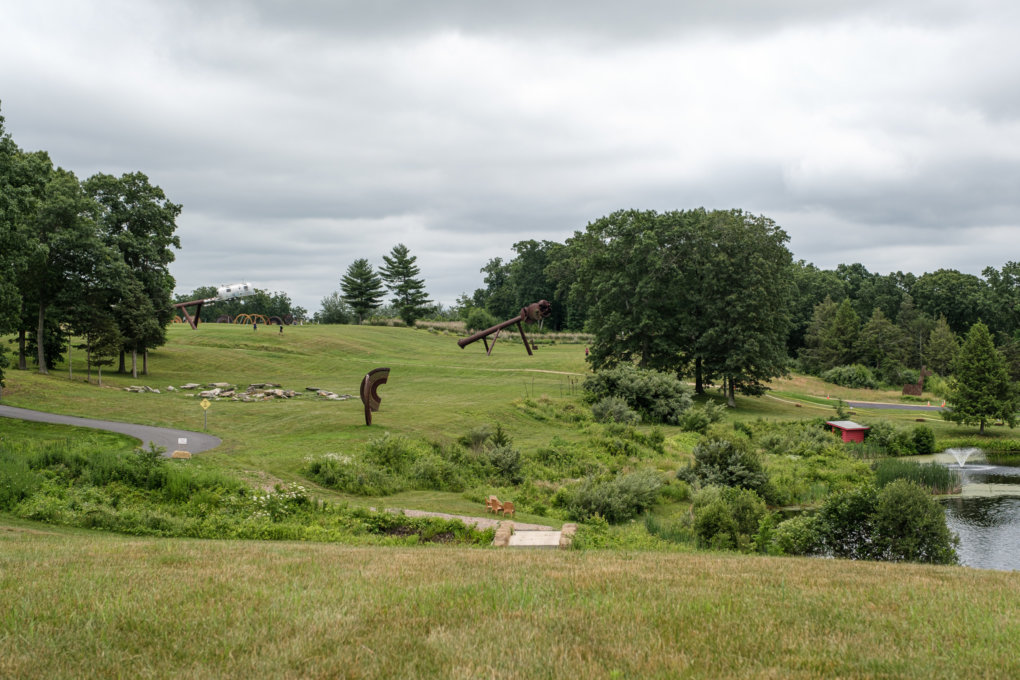
Contemporary art can feel snobby and haughty, but visiting Hogpen Hill Farms was a different experience. Even while driving through it on arrival, we were spinning heads and making stops, as it felt so unusual and plain cool. Facing a flying fish while walking through the woods, discovering a giant black swan on a pond, getting into a bamboo maze, or seeing an Airstream with an attached lawn chair on the way to explore other planets was just fun, both for my 11-year-old and me. Noticing some of the modern art references was intellectually satisfying, but just as an extra layer. To me, seeing Edward Tufte’s art and quirky jokes opened up a new dimension of his personality that I wasn’t sensing while attending his course or reading books. If you’re on the East Coast, interested in ET’s work or contemporary art, and can get hold of a ticket, I’d highly recommend making a trip.